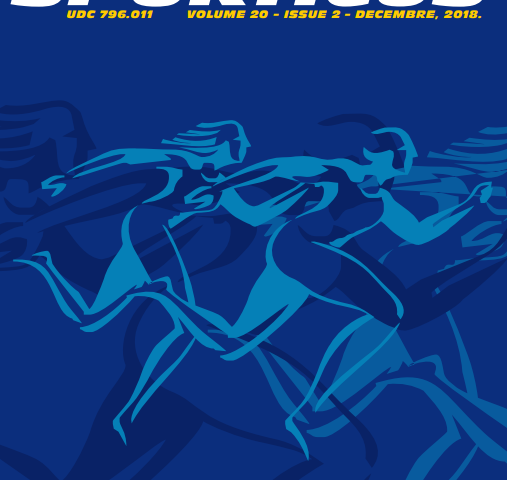Abstract
On a sample of a total of 70 young water polo players aged 14 ± 1 years, 170 ± 6, weights 70 ± 5, water polo clubs from Canton Sarajevo / Federation of Bosnia and Herzegovina, a survey was carried out to determine the significance and magnitude of the influence of basic motor skills on the swimming speed of the water polo edge technique on a 75-meter stretch. The study used 12 variables for assessing basic motor abilities that represented the prediction set of variables and one variable for evaluating the speed of swimming using water polo techniques as a criterion. The regression analysis found that the multiple correlation of the predictor system (basic motor abilities) with the criterion (swimming speed of the water polo crawl technique to 75 meters) is (R.772) with the explained total variability (R Square .596), at a statistically significant level p =. 000). This shows that the whole system of predictor variables is significant for predicting the results of swimming by water polo edge technique at 75 meters. From the set of applied basic motor variables, a significant influence on the criterion variable – swimming speed of the water polo crawl technique on a 75-meter section has the following predictor variables: the cost from the site, Beta = .410, which is significantly at the level p = 002; long-range jump, Beta = -.412, which is significant at p =, 010; agility in the air, Beta = .294, which is significant at the level p =, 026; vis in the fold, Beta = -, 461, which is significant at the level p =, 032; hull lifting in 30 seconds, Beta = .232, which is significant at p = 040; a deep precession on the bench, Beta = 258, which is significant at the level p =, 049. It can be noted that in order to achieve results in swimming water polo crawl by technique at 75 meters it is necessary to possess a high level of power capability in all its manifestations (explosive, static and repetitive), coordination ability and flexibility. The results obtained in this study can serve as a significant factor in predicting the possible impact of some basic motor skills on the speed of swimming in water polo crawl technique in young water polo players, which can significantly contribute to better planning and programming of training contents in working with young water polo players as well as a more quality implementation process selection of young people for water polo sport.


